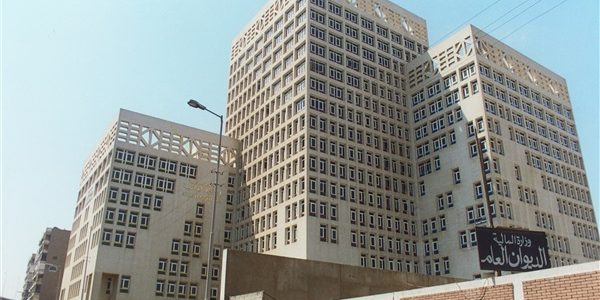Egypt will roll out its EGP 9.2 trillion budget for the fiscal year 2022/23 (FY 22/23) on July 1, the highest allocation in the country’s history. The new budget comes as Egypt navigates challenges driven by the Russia-Ukraine war, rising food and energy prices as well as the already existing impacts of the COVID-19 pandemic.
Total expenditure is projected to rise in FY 22/23 by 15.1%, reaching over EGP 2 trillion compared to the current EGP 1.8 trillion, according to the budget plan. Total revenues are expected to increase by 16.2% to EGP 1.5 trillion, up from EGP 1.3 trillion in FY 21/22. The income boost is expected because tax collection – which accounts for 75% of the total revenues – is anticipated to grow in FY 22/23 to a record high of EGP 1.1 trillion, up from EGP 947 billion in the previous fiscal year.
The ongoing economic challenges pushed the government to lower its GDP projection for FY 22/23 to 5.5%, slightly down from its original forecast of 5.7%.
Egypt will close out FY 21/22 with real GDP growth of 6.2% thanks to a strong performance during the first half before the Ukrainian war onset.

“The good thing is that the government has raised wages and compensation allocation in the FY 22/23 budget, which will help support the beneficiaries amid the rising prices of staple goods,” finance and investment analyst Mostafa Badra told Business Monthly.
The new budget includes an 11.2% increase in wages and compensation to EGP 400 billion, up from about EGP 360 billion allocated in FY 21/22.
Subsidies, grants, and social benefits were also increased by 14.5% to EGP 356 billion, compared to EGP 311 billion in FY 21/22.
“Public investment allocations come below expectations with a total of EGP 275 billion, which is up by only 5% compared to their allocations in FY 21/22,” Badra noted. “Egypt is expected to face a slowdown in its real GDP growth as the global economy is anticipated to experience a recession due to the inflationary wave that is rising.”
Direct and indirect investment outflows are other challenges Egypt is navigating, Badra highlighted. “Around EGP 300 billion in direct and indirect investment have exited the market since March, with an estimated $30 billion in indirect investment exiting from both the exchange market and the treasury bills.”
Boosting investments
Egypt has to increase its direct investments, Badra said. This will help the Central Bank of Egypt (CBE) avoid further interest rate hikes, especially since the US Federal Reserve is expected to raise its benchmark interest rates for the fourth time in July by 50 basis points (bps) or 0.5%, Badra noted, “This pathway will help stabilize the market and its prices. Raising interest rates will reflect negatively on investments and outflows will grow further.”
This year, the CBE hiked its key interest rates by a total of 300 bps or 3% over two consecutive meetings in a bid to contain inflation. Egypt’s urban inflation slightly rose in May to 13.5% compared to 13.1% in April, remaining at its highest levels in the past three years.
In its June meeting, the CBE maintained interest rates for the first time since March, keeping the overnight deposit rate, overnight lending rate, the rate of the main operation, and discount rate unchanged at 11.25%, 12.25%, 11.75% and 11.75%, respectively.
Expected total investments in FY 22/23 represent only 15% of the country’s GDP, according to state-run statistics agency CAPMAS. Around 75% is for public investment while only 25% is for the private sector. Private sector investments as a share of total investments are very low amid the many crises Egypt is weathering, Sherif El-Diwany, former head of the Middle East region at the World Economic Forum, explained to Business Monthly.
In June, Egypt announced the State Ownership Policy Document, which charts a map for greater private sector participation in the economy. The government aims to increase the private sector share of economic activity to 65%, from the current 30%, over the coming three years.
“The policy is still under dialogue for two months, so results won’t be felt until the policy is issued in its final draft,” El-Diwany said. The document is expected to come into effect during FY 22/23, with a wide range of partnerships available for private sector entities across all economic activities.







